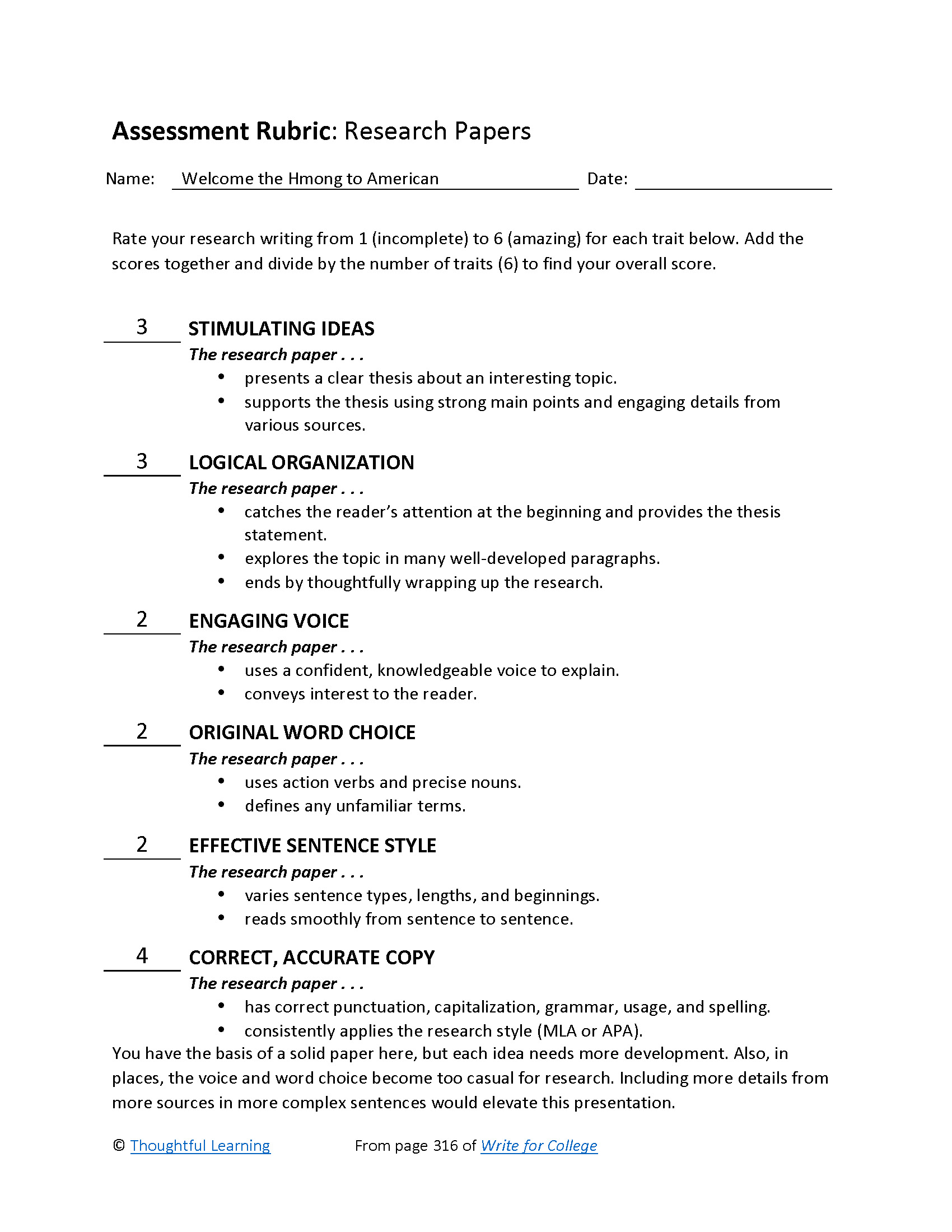Student Model
Welcome the Hmong to America
Hmong people from East Asia had to come to America because they helped Americans fight the Communists. But people in American don't realize this and act prejudiced toward them. That's too bad. The Hmong people aren't like other Americans because of their background, but that doesn't mean they aren't Americans.
The Hmong people were part of China, Thailand, Laos, Vietnam, and America. They've always kind of been strangers, even when they lived in a place for hundreds of years. They helped America fiht the Communists during Vietnam, but the Communists won, so the Hmong had to flee (Bankston). They tried to go to Laos, but a bunch of them died. So they decided to flee to the United States. They came to the U.S. cities, but they didn't fit in because they were farmers. That was in the 1970's. In the 1980's, they went to California and did fit in because they were farmers (Lai and Arguelles). In the 2000's, they filled up Minnesota and Wisconsin. There's 260,073 Hmong in America with 91,000 in California, 66,181 in Minnesota, and 49,240 in Wisconsin (“2010 Census”).
These states had good farm land and good family values, so the Hmong went there. They have big families all living together, which makes people mad if a house has too many people and too much noise and garbage. Hmong also expect girls to marry when they are 14, but Americans don't want that. The younger Hmong are growing up American and speaking English, which makes the older ones feel like their ways are left behind.
The Hmong have trouble getting good work because of the language. Also, they want to work on farms but can't afford the land and equipment. They have a harder time working in factories. So they don't make much money and they have a lot of people to support so they have a higher poverty. Now a lot of Hmong women have to work, too, which they don't like (Bankston).
Young Hmong are graduating from school and speaking English and they have regular type American attitudes. Older Hmong are afraid for their history. They also want to keep things like teen brides. The teens don't want that anymore. It makes the generations fight each other sometimes (“Bridging the Shores”).
What else is there to say? The Hmong are new, but everybody was new. All of the immigrants struggled to fit in. America is tough because it was tough people who made it. Hmong are tough people, so I think they will make it.
Works Cited
Bankston III, Carl L. “Hmong Americans.” Countries and Their Cultures, www.everyculture.com/multi/Ha-La/Hmong-Americans.html.
“Bridging the Shores: The Hmong-American Experience.” Wisconsin Public Radio. WERN, Madison, 12 Sept. 2008.
Lai, Eric, and Dennis Arguelles. The New Face of Asian Pacific America: Numbers, Diversity, and Change in the 21st Century. UCLA Asian American Studies Center Press, 1998.
“2010 Census Hmong Populations by State.” Hmong American Partnership 2010, www.vuenational.org/wp-content/uploads/2013/05/2010-Hmong-Census.pdf.

Rubric


Welcome the Hmong to America by Thoughtful Learning is licensed under a Creative Commons Attribution-NonCommercial-ShareAlike 4.0 International License.
Based on a work at k12.thoughtfullearning.com/assessmentmodels/welcome-hmong-america.